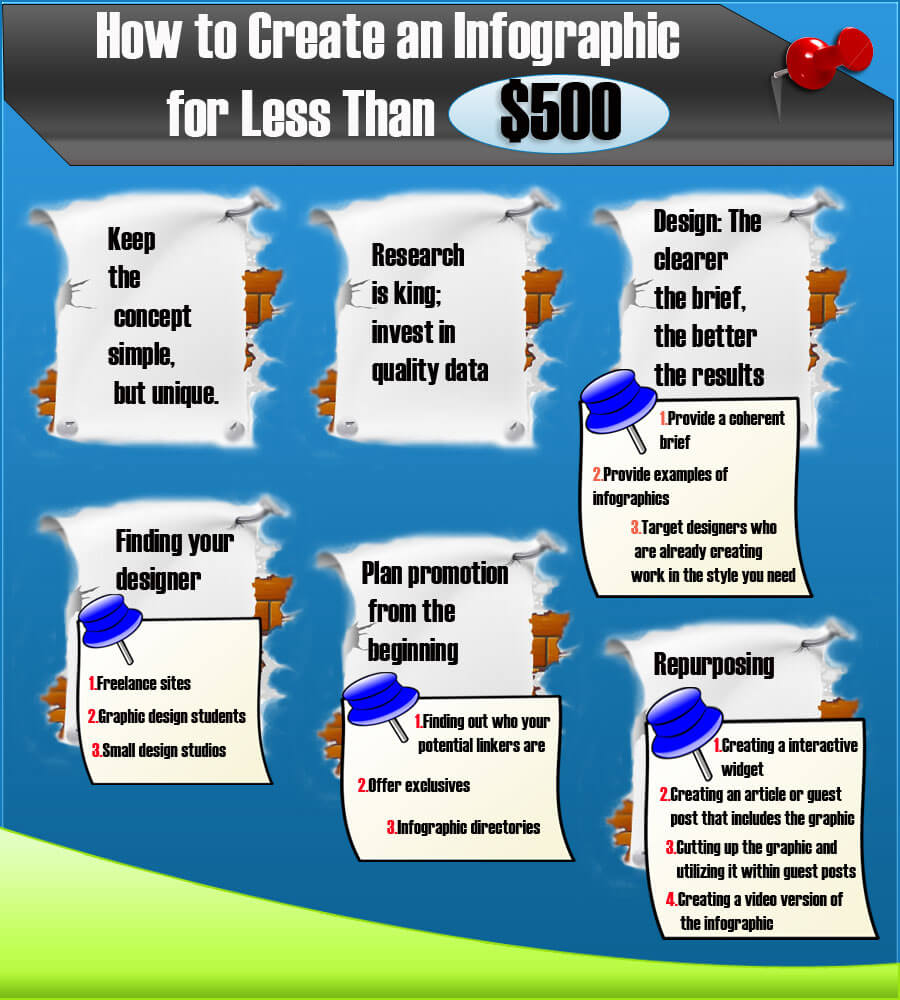During a discussion following Pak Hou Cheung’s presentation about outreach (very good by the way – it will be covered in a future post), Dave Naylor expressed the opinion that infographics were in Google’s crosshairs and that SEOs should be worried, hinting that they may be hit hard in the next three months (his afternoon presentation with Becky Naylor about how they build Bronco was awesome and well worth checking out).
The next presentation I attended was Kristal Ireland’s talk about ‘Social Media Strategy, Looking beyond the Bull Sh*t ’.
Infographics seemed to be regarded as something of a waste of time and not recommended as part of a ‘real’ social media campaign. Although I found it slightly ironic that much of the presentation itself made use of infographics, Kristal’s claims still beg the question: how has the infographic’s reputation sunk so low in the SEO community?
It is my belief that the growing sentiment against infographics is more about a lack of information from providers such as ourselves, rather than anything innately wrong with the format itself.
I’m hoping then that this post can dispel some of the most common criticisms levelled at infographics as marketing tools.
Are infographics just a new trick for acquiring links?

I think many SEOs believe, and this was implicit in Dave Naylor’s claim, that infographics are the latest naughty trick for getting easy links, similar to the article marketing methods of old.
To tackle this argument it might be worth reminding ourselves what in fact became of that section of the industry.
When article marketing first appeared it contained no links and was all about the sharing of information to other users on the web. As the method grew in popularity, article websites appeared and authors started getting referenced through author boxes and could include their URL. When article marketing just included marketing that involved businesses educating or selling to their audience, all was good.
Then SEO’s came along and like with most things we touch…
Well, it started off friendly enough. Some SEO’s even knew the value in article marketing (the relationships with the content sites) but many saw the quick link win as a way of scalable linkbuilding. Fast forward to today and links from article sites are useless or even harmful.
But what about article marketing itself, is that dead?
Well, the key point to take away is that there was good article marketing and there was bad. The good guys knew that ezinearticles…etc were just a way to get interest from real webmasters who were desperate for good quality content.
Relationships were built, high quality links were earned and by the time the article sites were hit they had long evolved into the world of content syndication and the art of guest posting.
Article marketing was not hit because Google had any problem with the format (the article), but because they had a problem with the way in which SEO’s were mass posting spun/low quality content across hundreds of sites.
I believe something similar holds true for infographics. Here’s what Matt Cutts thinks about the matter:
In principle, there’s nothing wrong with the concept of an infographic. What concerns me is the types of things that people are doing with them….
We have to accept that as an industry that we take something that works and push it to breaking point. It’s the nature of certain elements within SEO and we should accept that infographics are going to be released from fiver (see the awesome example below) or use totally unrelated topics to drive links like the list bait of old.
However, this does not in itself mean that the “infographic” format is toxic.
One of the ways that I like to test any linkbuilding format is to ask myself whether it would be used in the ‘real’ world. Or, to put it another way, ‘Would you still publish it, if you didn’t get any links?’
Many of our non-marketing clients would argue that infographics are anything but a waste of time for the average person. I won’t bore you with a sales talk but infographics can add support to arguments, make complex issues understandable and turn data into something meaningful.
A brighter future for infographics
There are awful infographics out there and they will continue to be made until the spotlight moves to the next shiny content format.
It’s highly unlikely that links from the type of sites with the domain infographicwebsitefromindiafor$50.com have any sort of authority now and I would be wary of any providers who include paid submission sites in their results.
However, this does not mean that infographics are a bad strategy for SEO/PR. Claiming as much is an oversimplification of the issue and spreads misinformation to an industry already full of half-truths and myths.
For as bloggers and webmaster get savvier, they will only link to good quality, well researched and relevant infographics; a situation that will hopefully put a smile on Matt Cutts’ face.
 This is an open letter to the SEO community.
This is an open letter to the SEO community.
Comments